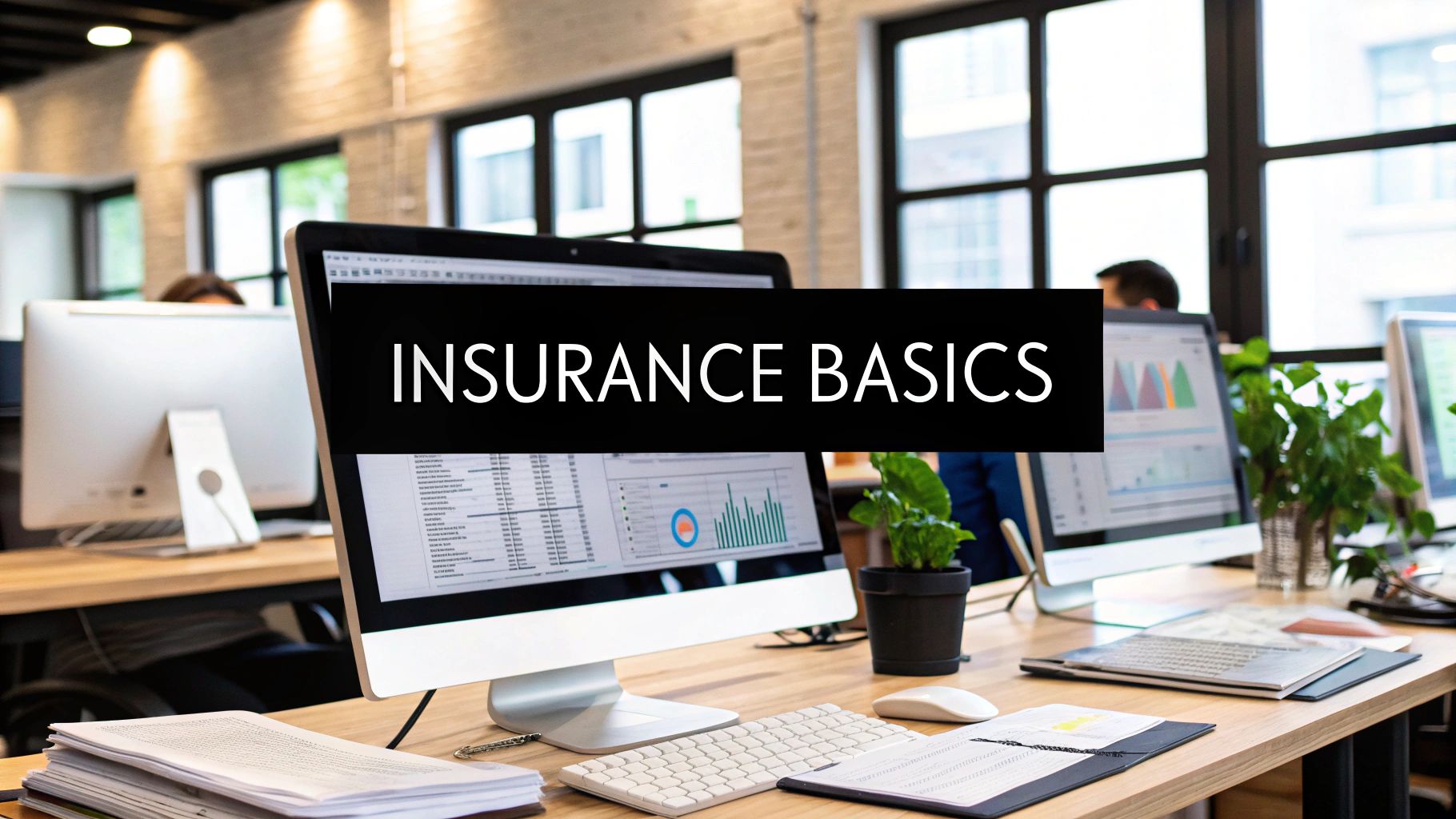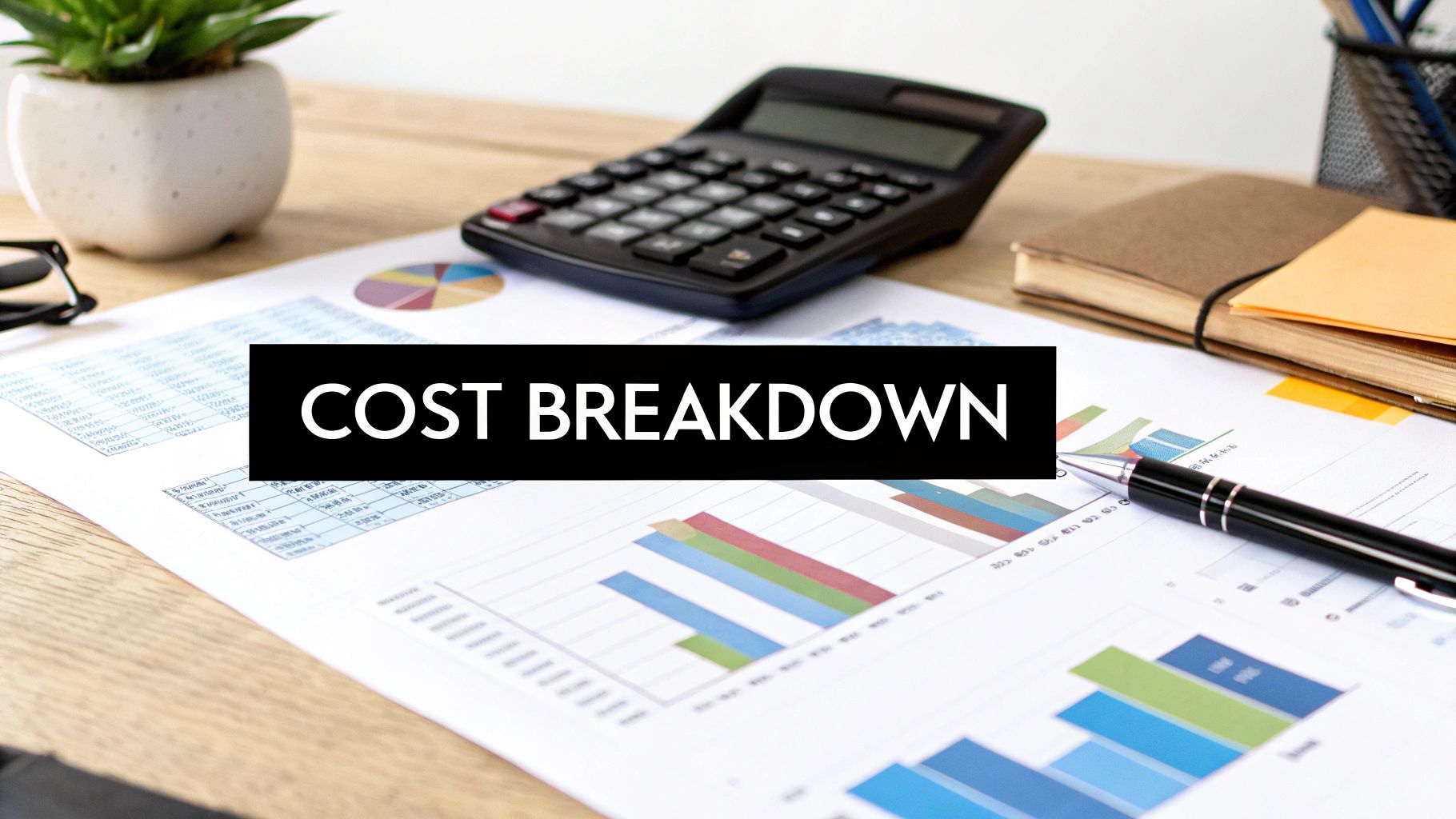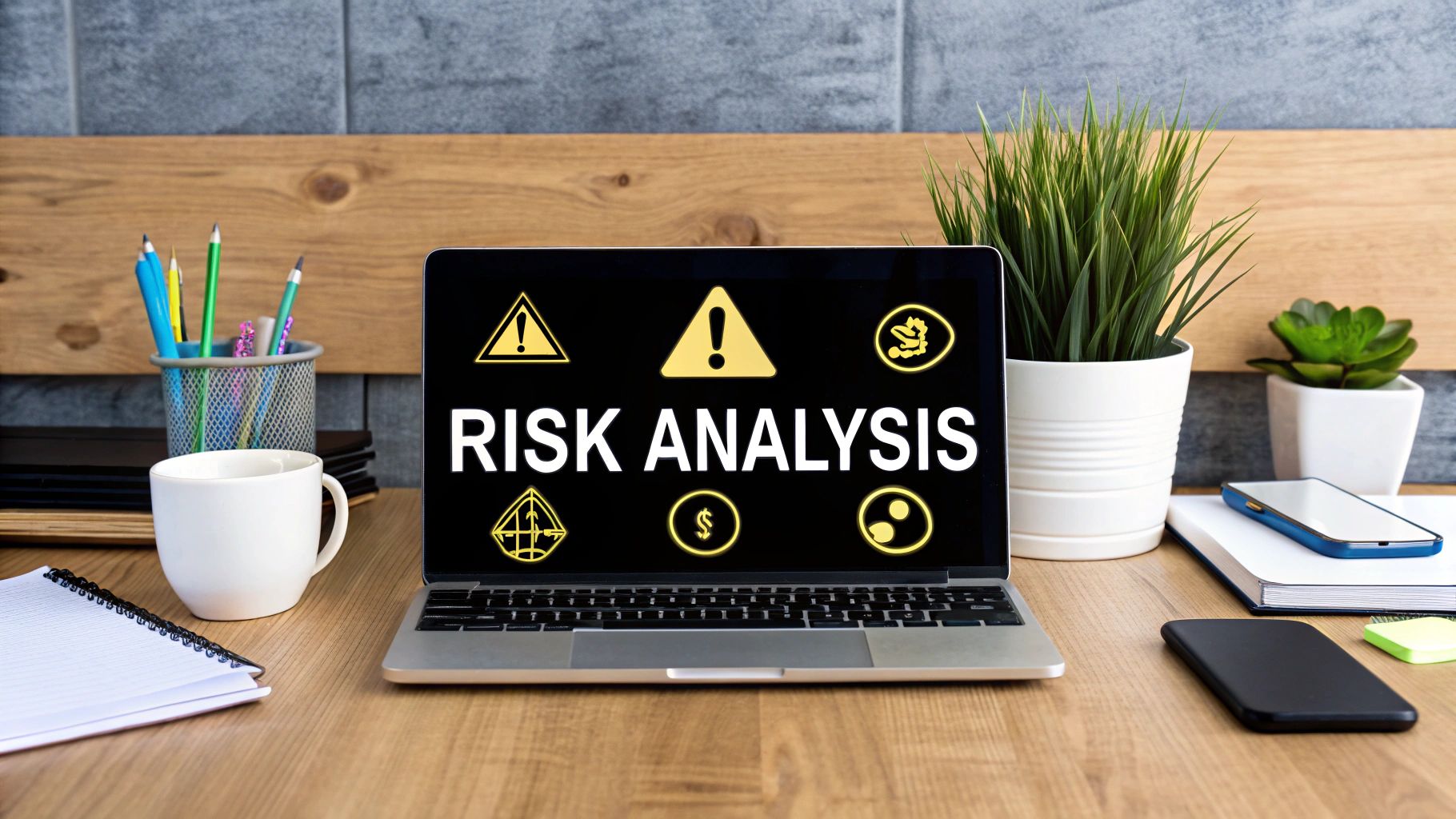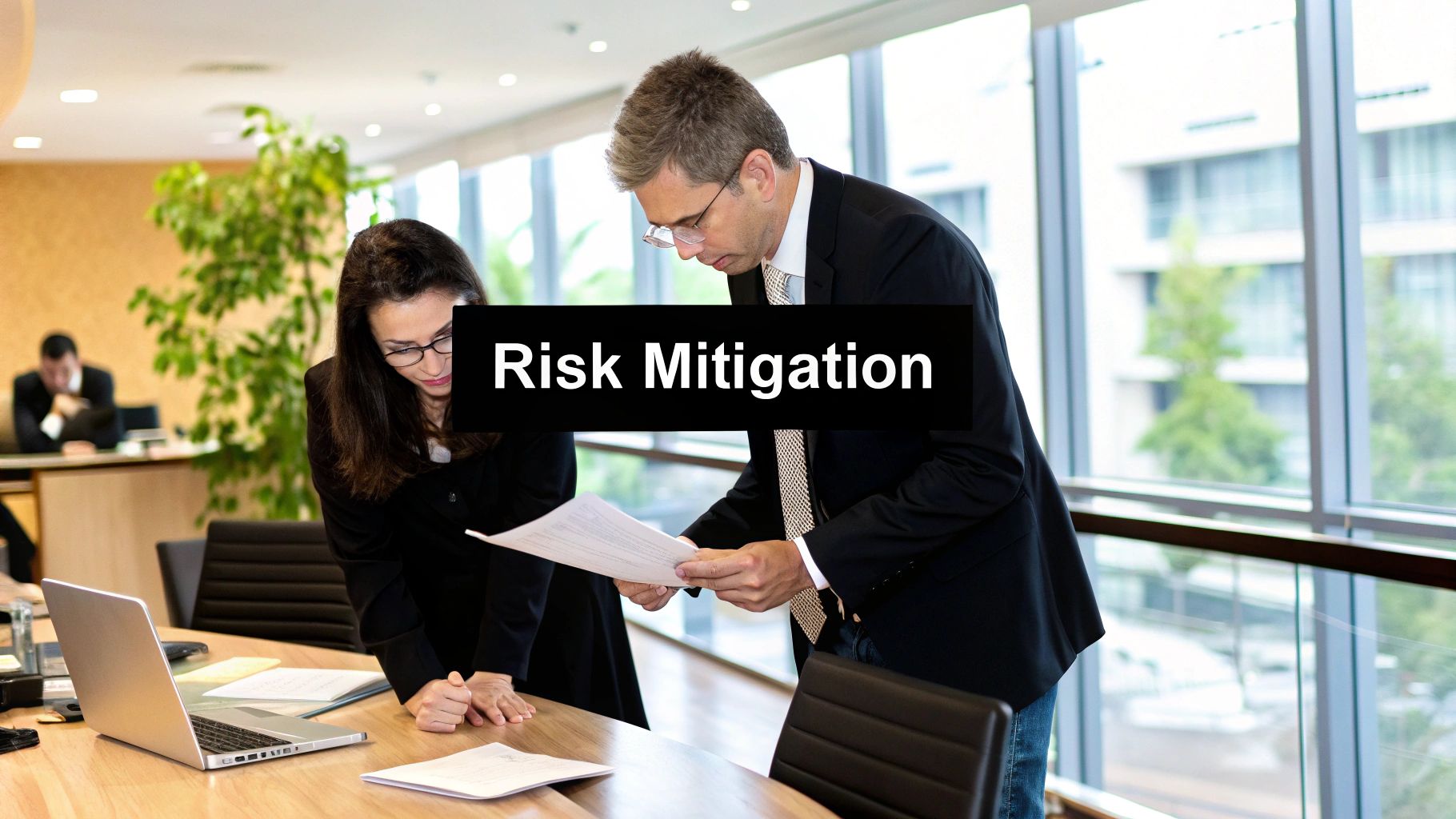Demystifying Professional Liability Insurance

Professional liability insurance can be a complex topic. However, grasping its fundamental purpose is vital for safeguarding your career. This insurance, often referred to as Errors and Omissions (E&O) insurance or Professional Indemnity Insurance (PII), protects professionals against claims stemming from mistakes, oversights, or negligence in their services.
This protection goes beyond general liability insurance, which typically covers physical accidents or property damage. Instead, professional liability insurance addresses the financial risks linked to the services a professional provides. For instance, if a consultant offers incorrect advice leading to financial losses for a client, they could be protected by their professional liability insurance.
This specialized coverage is increasingly crucial in today's legal environment. Professionals across various fields, from architects and engineers to consultants and IT specialists, depend on this insurance to protect their reputations and livelihoods.
The growing need for this type of protection is evident in the expansion of the professional liability insurance market. It is projected to reach approximately USD 435.30 billion by 2032, growing at a CAGR of 6.2% from 2023 to 2032. This growth highlights the increasing awareness of potential legal liabilities and the financial repercussions of professional errors. Learn more about professional liability insurance market growth here: Custom Market Insights. You might also find this helpful: How to master home insurance policies.
Understanding the Nuances of Professional Liability Insurance
Several factors distinguish professional liability insurance from other coverage types. It specifically targets risks inherent in delivering professional services, unlike general business operations coverage.
Furthermore, it encompasses a broad range of professional missteps, including negligence, inaccurate advice, and failure to adhere to professional standards. This wide scope ensures financial protection against a diverse spectrum of potential claims.
Why Professional Liability Insurance Is Essential
Defending against a professional liability claim can incur substantial costs, even if the claim is ultimately dismissed. Legal fees, court costs, and potential settlements can rapidly deplete financial resources.
Professional liability insurance mitigates these financial burdens. This allows professionals to concentrate on their work without the distraction of escalating legal expenses.
Additionally, securing this coverage can bolster a professional's credibility and show a commitment to client well-being. This can be a significant advantage in competitive markets.
What You'll Actually Pay: Real Numbers Revealed

Let's get down to the nitty-gritty of professional liability insurance: the cost. Understanding the financial commitment is crucial for budgeting and making informed decisions. Through research and industry insights, we've compiled data on actual premium ranges for various professions.
Premium Ranges Across Professions
These ranges provide a more accurate idea of potential costs than general estimates. For instance, a solo practitioner often faces different pricing than a large, established firm. This is due to factors such as the number of employees, revenue, and the perceived risk associated with the profession.
-
Solo Practitioners: Premiums typically range from $500 to $2,000 annually, depending on the specific profession and risk factors.
-
Small Firms (2-10 employees): Expect premiums between $1,000 and $5,000 per year.
-
Medium Firms (11-50 employees): Annual premiums can range from $3,000 to $10,000.
-
Large Firms (51+ employees): Premiums for larger firms generally start at $10,000 and can exceed $50,000 annually.
These are examples, and actual costs can differ significantly. Your location also matters. Professionals in different states might pay varying amounts for the same coverage due to differing regulations and legal environments.
To further illustrate these variations, the cost and growth rate of professional liability insurance fluctuate across different regions. For example, in 2024, Europe’s market size was USD 12,844.56 million, representing over 30% of the global revenue, with a projected CAGR of 2.4% from 2024 to 2031.
Meanwhile, the Asia Pacific region, accounting for approximately 23% of the global market with a size of USD 9,847.50 million, is projected to grow at a faster rate, with a CAGR of 5.9% during the same period. For more detailed statistics, visit Cognitive Market Research.
The following table offers a more detailed look at average professional liability insurance costs, broken down by industry and business size.
Average Professional Liability Insurance Costs by Industry
This table shows the typical annual premium ranges for professional liability insurance across different professions and business sizes.
| Profession | Solo Practitioner | Small Firm (2-10 employees) | Medium Firm (11-50 employees) | Large Firm (51+ employees) |
|---|---|---|---|---|
| Consultant | $750 – $2,500 | $2,000 – $6,000 | $5,000 – $12,000 | $15,000 – $60,000 |
| IT Professional | $500 – $1,500 | $1,500 – $4,000 | $4,000 – $9,000 | $10,000 – $40,000 |
| Real Estate Agent | $600 – $2,000 | $1,800 – $5,500 | $4,500 – $11,000 | $12,000 – $55,000 |
| Lawyer | $1,000 – $3,000 | $3,000 – $8,000 | $7,000 – $15,000 | $20,000 – $75,000 |
| Accountant | $800 – $2,700 | $2,500 – $7,000 | $6,000 – $14,000 | $18,000 – $65,000 |
As this table illustrates, premiums can vary significantly depending on the specific profession and the size of the business. It’s important to get a personalized quote to understand your specific costs.
The Impact of Policy Limits
Another key factor influencing cost is the policy limit. This is the maximum amount your insurance will cover for a claim. Higher policy limits typically mean higher premiums. Choosing the right limit involves balancing sufficient coverage and affordability.
Real-World Examples and Cost Optimization
Examining real-world scenarios can be valuable. How have others in your profession optimized their coverage? Understanding their strategies, like implementing strong risk management practices, can help you save.
Staying informed about cost trends is also important. These might include new regulations, legal changes, or emerging risks in your profession. By understanding these factors, you can make well-informed decisions about your professional liability insurance cost.
The Price Tag Puzzle: What Drives Your Premiums

Your professional liability insurance premium isn't arbitrary. It's a carefully calculated figure based on several key factors. Understanding these factors can help you manage your insurance costs. Let's explore what goes into determining your premium for this vital coverage.
Claims History: A Telling Indicator
Your claims history is a significant factor influencing your premium. Frequent claims suggest a higher risk to insurers, resulting in higher premiums. A clean record, on the other hand, can lead to lower rates. This emphasizes the importance of implementing effective risk management strategies.
These strategies can minimize potential claims and keep your premiums in check. Prevention is always better than cure, especially when it comes to professional liability.
Your Services and Inherent Risks
The specific services you offer also contribute to your premium calculation. Some services are inherently riskier than others. For example, a surgeon faces different risks compared to a consultant. This difference in risk profile translates to varying professional liability insurance costs.
The potential consequences of errors or omissions differ significantly between professions, and this is reflected in the premiums. Understanding the risks associated with your specific profession is key to understanding your premium.
Geographic Location and Its Influence
Your geographic location plays a significant role in determining your premium. Areas with higher lawsuit frequencies or specific regulatory requirements tend to have higher insurance costs. This is due to the direct impact of the legal and regulatory environment on the likelihood and cost of claims.
For instance, medical liability premiums have seen a notable increase in certain regions. In the United States, this surge has persisted for four consecutive years as of 2023, with 15 states leading the trend, according to the American Medical Association (AMA). This increase reflects the rising costs associated with medical malpractice claims. Conversely, directors and officers (D&O) liability insurance has seen declining rates, with D&O rates down by 5%. This variability underscores the numerous factors at play, including legal environments and economic conditions.
Risk Management: A Proactive Approach
Implementing robust risk management practices is crucial for minimizing your premiums. Insurers often offer discounts to professionals who demonstrate a commitment to mitigating risk.
This can involve establishing strong internal procedures, providing regular staff training, and staying current with industry best practices. Taking proactive steps to manage risk not only reduces your premium but also strengthens your overall professional practice. You might be interested in: What are the factors that drive home insurance costs?
Understanding Your Premium Structure
To understand how your professional liability insurance premium is calculated, it's helpful to see how various factors influence it. The following table illustrates how these factors can increase or decrease your insurance costs.
Impact of Various Factors on Professional Liability Insurance Premiums
This table illustrates how different factors can increase or decrease your professional liability insurance costs.
| Factor | Potential Impact on Premium | Significance Level (Low/Medium/High) |
|---|---|---|
| Claims History | Increase for frequent claims; Decrease for clean record | High |
| Services Offered (Risk Profile) | Higher for high-risk professions; Lower for lower-risk professions | High |
| Geographic Location | Higher in regions with frequent lawsuits or strict regulations; Lower in areas with fewer lawsuits and less stringent regulations | Medium |
| Risk Management Practices | Decrease for proactive risk management; Increase for lack of risk management | Medium |
By understanding how these factors interact, you can gain valuable insights into your premium structure. This knowledge empowers you to make informed decisions about your coverage.
Taking Control of Your Insurance Costs
Your premium is a combination of these different factors. By understanding how each element contributes to the overall cost, you can take control of your insurance expenses. This involves evaluating your risk profile, implementing robust risk management strategies, and understanding the influence of your location. These proactive measures can help you minimize your professional liability insurance cost and ensure you have the right coverage at the right price.
Industry Showdown: Who Pays More and Why

The cost of professional liability insurance varies significantly across industries. Understanding these differences is crucial for securing affordable coverage. Comparing your costs to others in your field is an essential step. This section explores why some professions pay substantially more for this vital protection.
High-Risk Professions and Their Premium Burden
Some professions, such as medical professionals, often face significantly higher professional liability insurance costs. Surgeons and physicians, for example, can pay premiums up to ten times higher than consultants with similar revenue. This difference stems from the inherent risks associated with their work. The potential for severe consequences from errors or omissions in these fields contributes significantly to increased premiums.
The frequency and severity of malpractice claims in healthcare also contribute to higher professional liability insurance costs for medical practitioners. The potential for high-value settlements in medical malpractice cases significantly impacts insurance companies' risk assessments and, consequently, the premiums charged.
Risk Triggers: What Insurers Consider
Insurers evaluate several factors when determining professional liability insurance costs. These "risk triggers" can make certain professions more expensive to insure. Industries with frequent litigation or complex regulatory requirements, for instance, often face higher premiums. Financial advisors, for example, are experiencing increased exposure due to evolving regulations. This translates to higher premiums as insurers adjust their pricing to reflect the increased risk.
Similarly, the rise of telehealth has created new challenges for healthcare professionals. The increase in telehealth malpractice suits contributes to rising professional liability insurance costs for practitioners in this field.
Benchmarking Your Costs Against Industry Standards
Understanding the factors that drive premiums in your specific industry lets you benchmark your costs against true industry standards. This comparison is crucial for avoiding overpayment for coverage. A consultant, for example, should compare their professional liability insurance cost to the average premium for other consultants, not to the premiums paid by medical professionals.
- Medical Professionals: High-risk, high-cost due to the potential severity of claims.
- Financial Advisors: Increasing premiums due to evolving regulations and potential financial losses.
- Consultants: Generally lower premiums compared to medical or legal professions.
- IT Professionals: Moderate risk with premiums reflecting the potential for data breaches or system failures.
Navigating High-Risk Classifications
Even within the same profession, certain specializations can be classified as higher risk. A surgeon specializing in a high-risk procedure, for instance, may face higher premiums than a general practitioner. This is because insurers consider the specific activities and services offered when calculating risk.
Understanding your specific risk classification within your profession can help you make informed decisions about your coverage and negotiate with insurers effectively. By focusing on robust risk management strategies and demonstrating your commitment to best practices, you can potentially mitigate some of the higher costs associated with higher-risk classifications. This proactive approach can lead to more favorable premiums and ensure you have the appropriate level of protection without overpaying.
Strategic Moves to Lower Your Insurance Costs
Smart strategies can significantly reduce your professional liability insurance costs without compromising necessary coverage. This goes beyond simply comparing quotes. It involves understanding the factors you can control to influence your premiums.
Deductible Strategies: Balancing Risk and Savings
Your deductible is a powerful tool in managing insurance costs. This is the amount you pay out-of-pocket before your insurance coverage begins. A higher deductible often results in lower premiums. This is because you're assuming more of the initial financial burden in the event of a claim.
However, setting your deductible requires careful consideration. While a higher deductible lowers your professional liability insurance cost, it also increases your financial responsibility if a claim arises. Choose a deductible that you can comfortably afford to pay.
Documentation: Showing You're Low-Risk
Maintaining thorough records can significantly impact your premiums. Detailed documentation of your procedures, client interactions, and risk management practices demonstrates a commitment to minimizing risk. This can make you a more desirable client for insurers, potentially lowering your professional liability insurance costs.
For instance, comprehensive records of client consultations, including signed agreements and documented advice, are invaluable in defending against potential claims. This documentation showcases your proactive approach to risk management.
Certifications and Associations: Untapped Savings
Certain professional certifications can sometimes result in premium discounts. However, it's important to research which certifications are recognized by insurers in your specific field. Some certifications hold more weight than others, demonstrating a higher level of expertise and adherence to best practices, ultimately affecting your professional liability insurance cost.
Membership in professional associations can also provide access to exclusive group rates or preferred pricing not available to the public. These associations often negotiate discounted rates for their members, offering significant savings on professional liability insurance.
Presenting Your Practice: Highlighting Your Strengths
How you present your practice to insurers plays a crucial role in determining your premium. Clearly articulate your procedures, training programs, and any risk mitigation measures you've implemented. Highlighting these efforts demonstrates a proactive approach to risk reduction, making you a more attractive client.
This is similar to applying for a loan. A strong credit history and stable finances typically result in better interest rates. Similarly, showcasing your commitment to risk management can lead to more favorable professional liability insurance costs. Read also: How to master car insurance savings.
Putting It All Together
By understanding these strategies, you can effectively manage your professional liability insurance cost. It's not simply about finding the cheapest policy. It's about securing the appropriate coverage at the best possible price. By actively managing risk and effectively presenting your practice, you can significantly influence your premiums and secure comprehensive protection without overspending.
Tough Questions Answered: Expert Insights
This section offers straightforward answers to key questions about professional liability insurance costs and their effects on your business. We've spoken with experts to clarify deductions, claims, coverage transitions, and more. This information helps you make well-informed decisions regarding your professional protection strategy.
Tax Deductibility of Professional Liability Insurance Premiums
A common question is whether professional liability insurance premiums are tax-deductible. Generally, these premiums are treated as a business expense, deductible for most self-employed professionals and businesses. However, specific deductibility may depend on your business structure (sole proprietorship, LLC, partnership, etc.). Consulting with a tax advisor is recommended to maximize your deductions.
How Claims Impact Future Premiums
Understanding how claims influence future premiums is vital for managing your professional liability insurance costs. While filing a claim offers financial protection, it could also increase future premiums. Insurers consider claims as indicators of higher risk. However, not every incident requires reporting. Minor incidents resolved swiftly and amicably may not warrant reporting if they might significantly raise premiums.
Navigating Coverage During Service Expansions
As your business grows and changes, your insurance coverage should adapt accordingly. When expanding services, review your professional liability insurance policy thoroughly. You might need to modify your coverage to encompass new services. This proactive approach ensures appropriate protection for every aspect of your business. Neglecting to update your policy can leave you exposed to uncovered claims.
Specialized vs. General Policies
Choosing professional liability insurance often presents a choice between specialized and general policies. Specialized policies target particular professions, such as medical or legal practices. General policies offer broader coverage but may not address the unique risks of your specific profession. Selecting the right policy type depends on carefully evaluating your needs and risk profile. Specialized policies often provide more tailored protection, while general policies may be more affordable for lower-risk professions.
Multi-State Practice and Cost-Effective Coverage
Practicing in multiple states complicates maintaining adequate coverage. Each state may have different licensing and insurance requirements. Complying with regulations in every state where you operate is essential. Securing a policy covering all states in which you practice streamlines compliance and avoids potential legal problems.
Excess Coverage: When Is It Necessary?
Excess coverage, also called umbrella insurance, offers additional liability protection beyond your primary professional liability policy. While it increases professional liability insurance costs, it can be invaluable for high-value claims. Determining whether you need excess coverage requires careful consideration of your risk profile and the potential financial implications of a large claim. If your primary policy limits are insufficient for a potential judgment, excess coverage provides a crucial safety net. This is particularly important in high-risk industries, where claims can be substantial.
These insights help you make strategic decisions about your professional liability insurance. Understanding these aspects of coverage, claims, and cost management enables you to protect your business and career effectively.
Comments are closed.